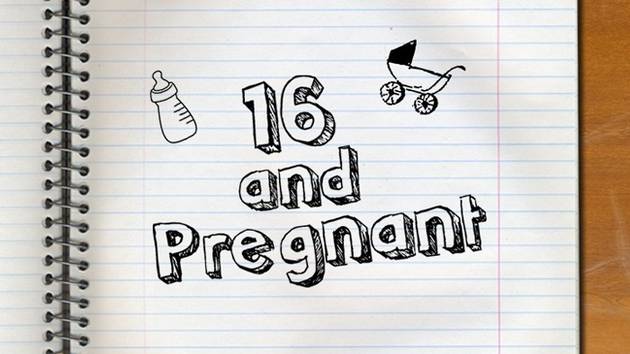
MTV’s “16 and Pregnant” has contributed to lower teen birth rates in the US – Photo from MTV (http://bit.ly/1iWeb1A)
I confess I’ve only been able to watch a few minutes at a time of the MTV show 16 and Pregnant. It isn’t necessarily that it’s always painful to watch, though at times that’s the case. It’s more that it displays the tedium and difficulty of raising a child, and my television tastes skew toward the more spectacular. The show opens with scribbles on a notebook — baby carriages, teddy bears, and rattles drawn on a college-ruled sheet of paper, the perfect combination of parenthood and boredom-induced doodling usually reserved for first-period biology. And that’s what the show details. In its first season, the show followed six teenage girls whose pregnancies were radically changing the plans they (and in most cases, their boyfriends or fiancés) had for the future.
Several of the young women would go on to star in the spinoff show Teen Mom, about navigating life and co-parenting after the baby’s been born. Farrah Abraham moved from Iowa to Florida with her daughter and starred in a porn film. Amber Portwood went to prison on drug-related charges and may not regain partial custody of her daughter.
Now, a recent study from the National Bureau of Economic Research suggests that the declining teen birthrate in the US might have to do with the stark reality of teen parenthood portrayed on 16 and Pregnant. Melissa Kearney, one of the co-authors of the NBER study and an economics professor at the University of Maryland, told NPR’s Audie Cornish they got their data for the study from Nielsen ratings, Google, and Twitter, among other places:
“The Twitter data was astounding. In the Twitter data we can actually see what teens are tweeting, and there are literally thousands of tweets that say things like: ‘Watching 16 and Pregnant reminds me to take my birth control.’ [And] ’16 and Pregnant is the best form of birth control.'”
The findings of Kearney and her co-author, Wellesley professor Phillip B. Levine, were statistically significant (I’ve been dying to use that phrase ever since I dropped out of Stats my freshman year in college):
“We find that 16 and Pregnant led to more searches and tweets regarding birth control and abortion, and ultimately led to a 5.7 percent reduction in teen births in the 18 months following its introduction. This accounts for around one-third of the overall decline in teen births in the United States during that period.”
(Regarding the role of abortion in the trend, Kearney said “We think it’s largely driven by a reduction in teen pregnancy, because the overall trend is pregnancies are down and there has not been an increase in abortions.”)
The thing here that is most interesting to me is the thought that, as Kearney pointed out, media might actually be having a positive influence on the people who interact with it. Our conversations around TV shows can so often tend toward what’s wrong with them: too much sex, too much violence, too much unnecessary drama. And those conversations are worth having, but here we see an example of storytelling through television that is encouraging responsibility.
What we watch can influence how we think and behave. That may not always be the case across the board, but it’s an important lesson from this study, and one we would do well to remember as we think about the role of entertainment as a shaping force on both our culture and our faith.




